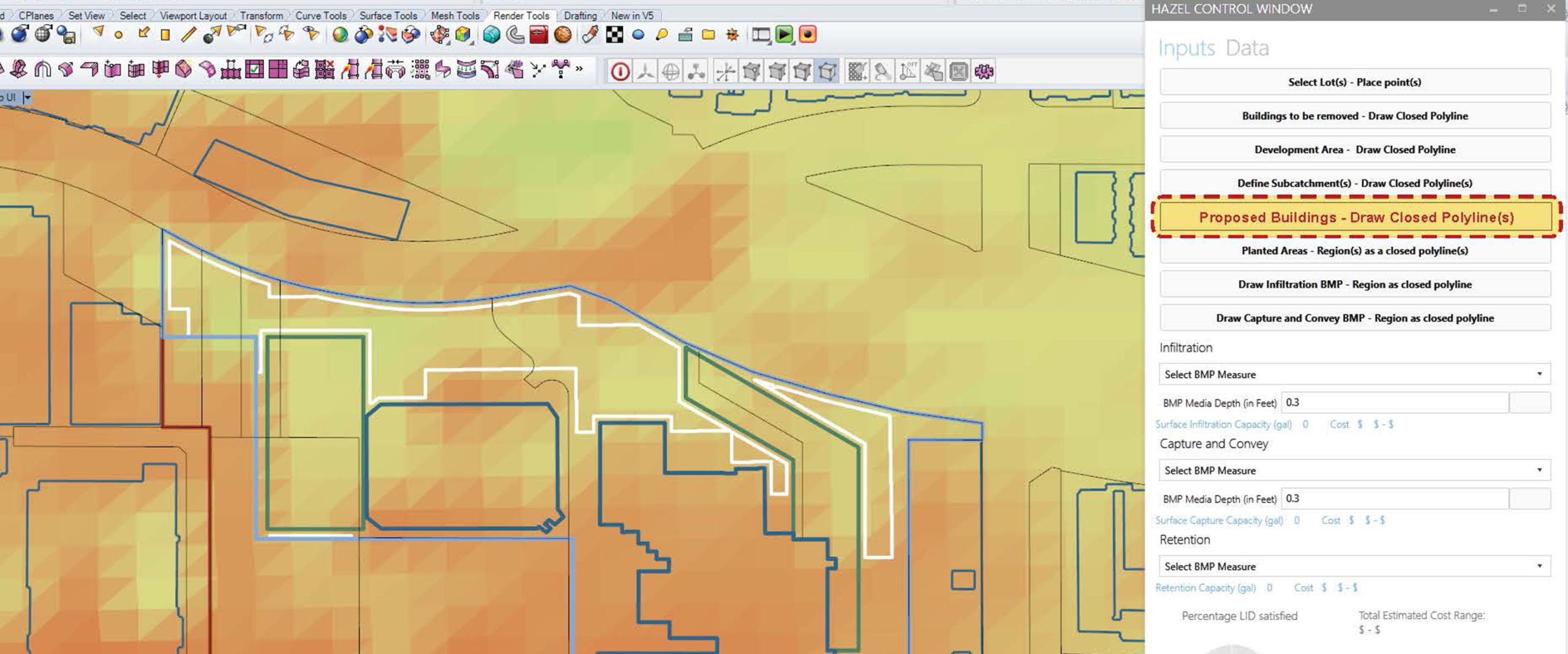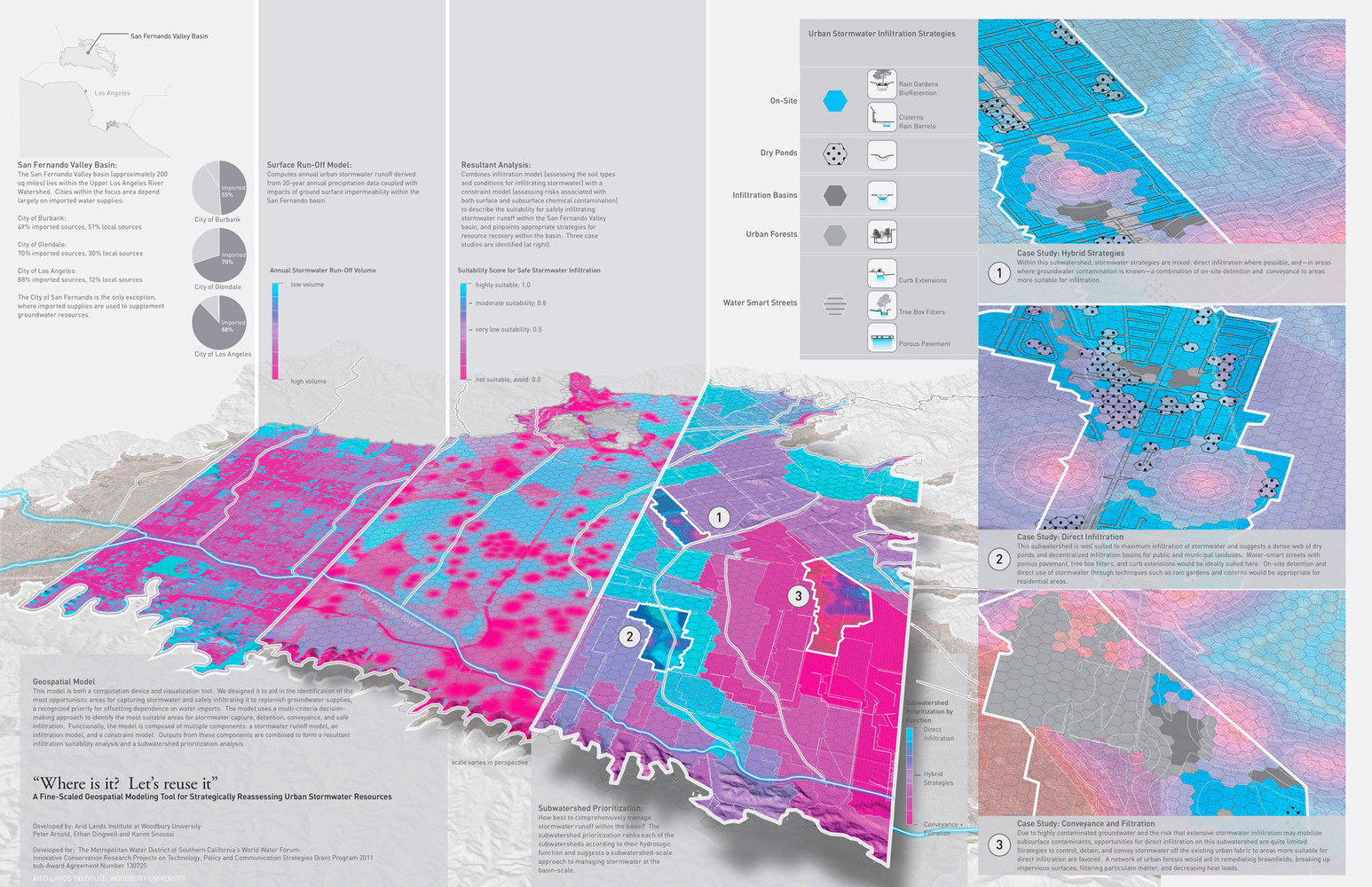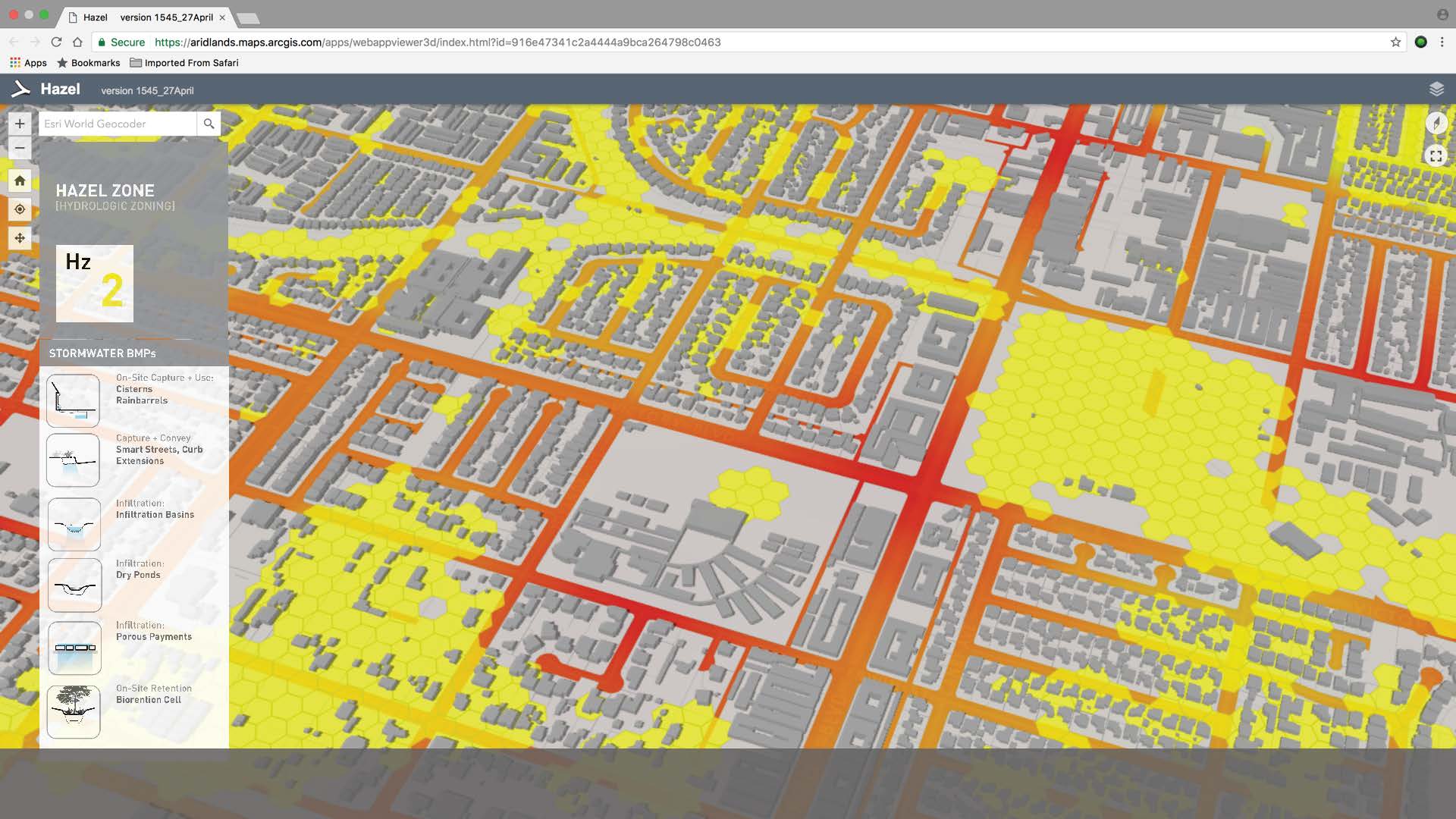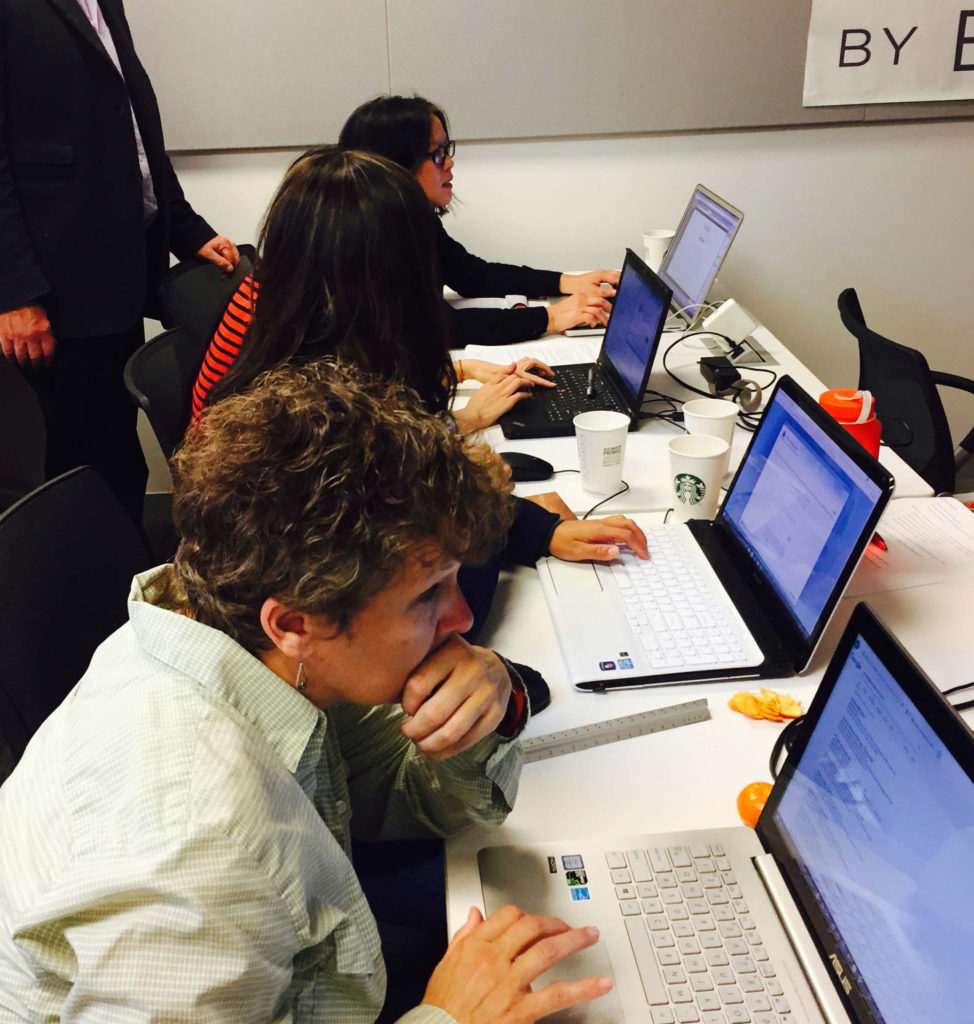Using a Digital Design Tool to Increase Stormwater Capture for Cities
The 2015 Latrobe prize enabled a cross-disciplinary team of partners led by the Arid Lands Institute to develop and test a digital design tool, known as “Hazel,” that allows arid communities anywhere to design and build the infrastructure needed to capture, retain and distribute stormwater runoff. The technology builds on previous public- and private sector-funded research to maximize low-carbon localized water supply; shape water-smart urban planning, zoning and building policy; identify key sites for public and private investment; develop pilot projects that are scalable and replicable; build water-conversant design professions and support water-sensitive design education. Hazel collects data and enables engineers and architects to make more thoughtful decisions on the integration of stormwater capture and reuse in their projects.
Hazel is working at a crossroads of need and activity. Hundreds of cities across the United States are non-compliant with stormwater stewardship laws, but a growing funding gap resulting from limited federal investment and billions of dollars in hardware repairs makes it difficult for cities to make the necessary improvements. Public-Private partnerships could help fill this gap, as demonstrated in Philadelphia, Detroit, Atlanta, and Washington. Storm water credit trading provides incentive for these partnerships and Hazel is well positioned to support those markets. Hazel’s ability to identify districts, zones, and varying degrees of hydrologic value in specific lots could be essential to shaping healthy credit markets.




